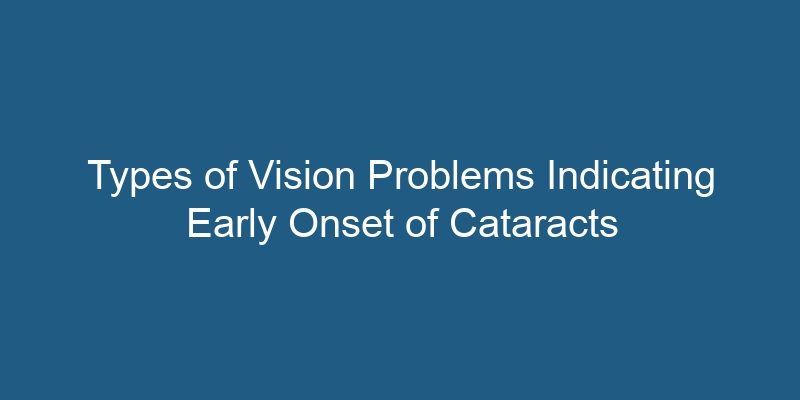Vision problems can be indicative of various underlying conditions, and one such condition is cataracts. Cataracts occur when the lens of the eye becomes cloudy, resulting in blurred or impaired vision. While cataracts typically develop with age, there are certain types of vision problems that may suggest the early onset of this condition. In this article, we will explore these different types of vision problems and discuss how they may be related to the development of cataracts.
1. Blurred Vision
One of the most common symptoms of cataracts is blurred vision. It occurs when the lens becomes cloudy, obstructing the passage of light to the retina. As a result, objects may appear hazy or out of focus. Blurred vision can occur in one or both eyes and may worsen over time.
2. Double Vision
Double vision, also known as diplopia, is another potential sign of cataracts. This condition causes a person to see two images of a single object, overlapping or side by side. Double vision can occur in one eye or both eyes and may be more pronounced when looking at objects in the distance.
3. Sensitivity to Light
Individuals with cataracts often experience increased sensitivity to light, a condition known as photophobia. This sensitivity can make it difficult to tolerate bright lights, such as sunlight or car headlights, and may result in discomfort or glare. Photophobia can impact daily activities and may require the use of sunglasses or tinted lenses to alleviate symptoms.
4. Difficulty Seeing at Night
Another common vision problem associated with cataracts is difficulty seeing in low light conditions, particularly at night. This is known as nyctalopia or night blindness. Cataracts can cause a reduction in contrast sensitivity, making it challenging to distinguish objects in dimly lit environments.
5. Fading or Yellowing of Colors
Cataracts can also affect a person’s perception of colors. Many individuals with cataracts report a fading or yellowing of colors, making them appear less vibrant or washed out. This change in color perception can affect various aspects of daily life, such as the ability to differentiate between traffic lights or identify ripe fruits.
6. Halo Effect Around Lights
When cataracts begin to develop, individuals may notice a halo effect around lights, especially in low light conditions. This halo appears as a ring of light surrounding a light source, such as streetlights or headlights. The halo effect can cause additional glare and can make it challenging to see clearly, particularly at night.
7. Frequent Changes in Eyeglass Prescription
If you find yourself needing frequent changes in your eyeglass prescription, it could be an indication of cataracts. As cataracts progress, the fluctuation in vision can lead to the need for updated prescriptions more frequently. If you notice that your current prescription no longer provides adequate vision correction, it is essential to consult with an eye care professional.
8. Reduced Contrast and Clarity
Cataracts can also impact contrast and clarity of vision. Objects may appear less defined, and there may be a loss of sharpness or crispness in visual perception. This reduction in contrast and clarity can make it challenging to read, drive, or perform tasks that require precise vision.
Frequently Asked Questions (FAQs)










